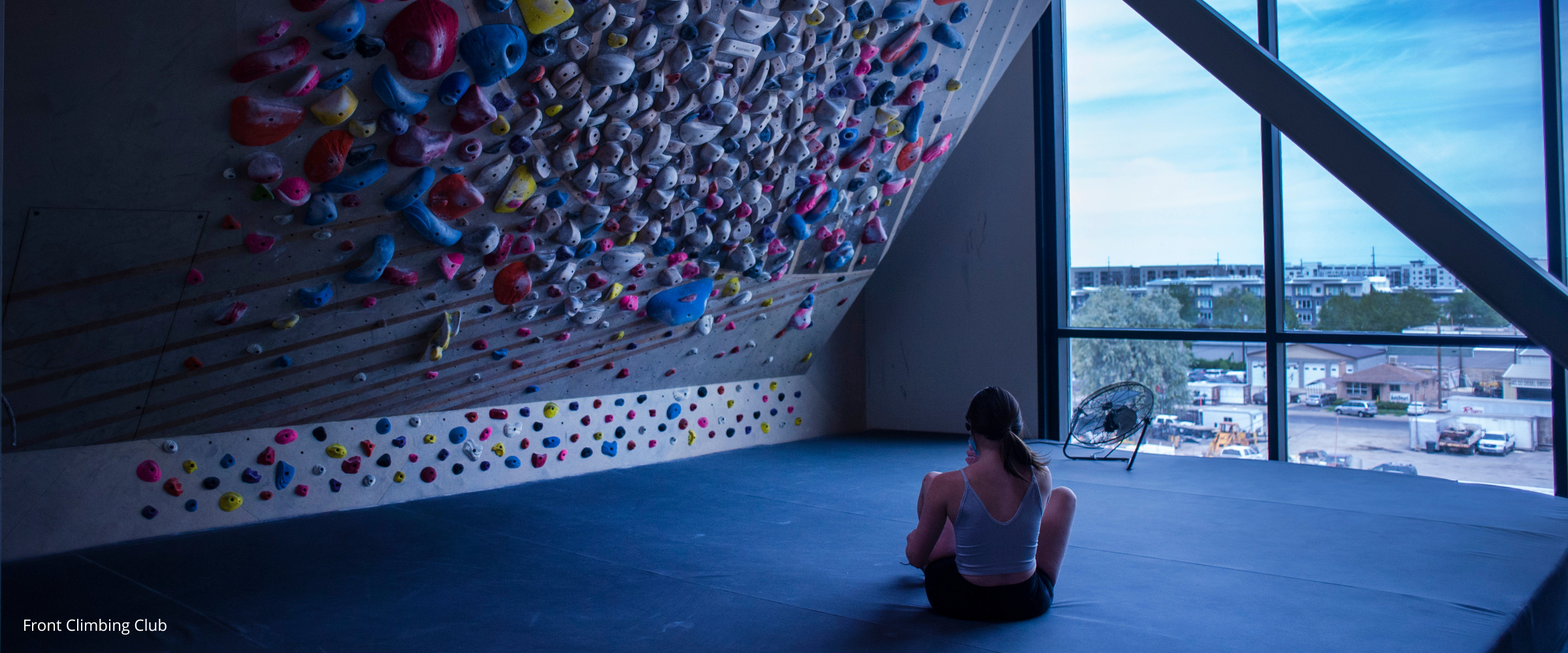Gym Owners & Indoor Climbing's Boom: Part 2

Editors Note: This is Part 2 in a 3-part series on the profitability of the indoor climbing industry. If you haven't read part one, do so here!
Despite the impressive array of industry data available, we do not have a clear picture of the total profitability of the industry regarding revenue. As the booming growth trends seem set to continue, the industry will need to innovate and adapt to the changing situation. As existing and potential customers see an increase in indoor climbing gym options, it will become increasingly important for climbing gyms to attract, build, and maintain their bases.
Data points—such as the glaringly absent data on wages (let's call it the Wage Elephant in the room)—will become more significant as indoor climbing gyms begin more frequently vying for the best job candidates in an environment of professionalization.
Keeping Employees Affects Your Bottom Line in More Ways Than One
We have spoken at length about the importance of employee recognition and the nurturing of a strong workplace culture—key elements to maintaining a happy and productive workforce.
Building a robust onboarding process, providing growth opportunities, and emphasizing the significance of quality leadership provide further guidance on best practices for employee retention. While some industries, such as retail and hospitality may be expected to experience higher turnover rates, the commonalities between those spheres and the climbing industry don’t have to be identical.
Interested in Onboarding Strategies?
Sign up for the Comprehensive Onboarding Workshop at the CWA Summit
However, the indoor climbing industry struggles with retaining staff – a fact I probably don’t need to reiterate. The correlation between highly skilled workers and business success is glaringly obvious. Thus, we must find a way to create an environment where employees not only want to find work at your gym but want to keep that job, too.
There are widely considered to be two types of employee turnover: voluntary and involuntary.
Avoidable voluntary turnover—encompassing work culture, management issues, growth opportunities, and low wages—is, as the name implies, avoidable.
It is worth mentioning that an employee’s stated reason for leaving a job is often because we are not checking all the boxes. A rewarding work culture is great, but a lack of growth will still be stagnant. Likewise, responsible leadership is very desirable, but it does not offset unlivable wages.
The point is that we, as employers, can genuinely deliver on most of these characteristics, but unless we encompass all of them, we will likely continue to see good people depart.
Maintaining high—or even regular—avoidable employee turnover has crippling consequences for a business, resulting in lower morale as staff see friends depart, share their sentiments, and the result is decreased productivity due to the loss of morale. If your team has shrunk or regularly shrinks, it puts an increased workload on those who remain, which could quickly accelerate their burnout and departure.
READ ALSO: Employee Retention Hacks
Combine this with the monetary cost, where it is reported that an employer will pay around 33% of an employee’s salary to replace them. For hourly wage earners, companies spend almost $2,000 and nearly 50 hours a year on training. While these numbers will vary from industry to industry, we can estimate our expenses by exploring the impact areas of recruiting, training, benefits, and material (e.g. staff shirts, name tags, etc.).

Source: The Academy to Innovate HR’s (AIHR) return on investment (ROI) calculator
Now that we have a thorough understanding of what employee turnover costs us, and why retention strategies are so essential, we need to couple this knowledge with the implications of professionalization.
Professionalism of the Indoor Climbing Industry & Profitability
What does professionalism even mean and how is it relevant to our conversation?
Defined technically as “the action or process of giving an occupation, activity, or group professional qualities, typically by increasing training or raising required qualifications,” this phenomenon will necessarily arise within the indoor climbing industry due to the continued patterns of growth we expect to see.
As climbing gyms continue to develop themselves, whether as regional flavors or nationwide monoliths, they must develop and attract qualified individuals to oversee their facilities. The larger the operation, the more robust the requirements, including marketing, coaching, human resources, fitness, event planning, and so on.
While some climbers caution against the eventual or self-evident loss of character these trends designate for the indoor climbing industry, this doesn’t need to be the case.
Similarly, the professionalization of our staff does not entail their soullessness or the emptiness of our spaces. We don't need to replace our passionate climbers with dispassionate MBAs; rather, it opens opportunities for those dedicated folks within our teams to pursue higher learning, certification, and growth within an atmosphere that not only encourages but rewards the time and energy we spend on these endeavors.
Indeed, it will be gym owners/operators and stakeholders who declare what professionalization of our industry even means. We can determine what desirable industry characteristics are, and what knowledge is worth having, and explore new ways to impact and grow our spaces. We could foster bottom-up professionalization, top-down, or a combination of the two; we are not all beholden to private equity and someone else’s business acumen.
It will become increasingly vital for gyms to implement retention strategies; invest in human leadership; ensure growth opportunities; foster a healthy work environment; and pay a competitive, livable wage.
Do You Have a CWI-P On Staff?
The CWA's Certification Program aims to provide a solution to the much-needed certification gap in the indoor climbing industry. Be part of the reason the indoor climbing industry continues to professionalize and certify your staff.
About the Author
 Chris Oshinski is the assistant director for Sportrock Climbing Centers Sterling, VA location, passionate for teaching youth and addressing inequalities. Having obtained an MA in Public Sociology in 2018, Chris loves to explore the myriad forms of agency vis-a-vis individual and collective efforts at fostering social justice and human rights.
Chris Oshinski is the assistant director for Sportrock Climbing Centers Sterling, VA location, passionate for teaching youth and addressing inequalities. Having obtained an MA in Public Sociology in 2018, Chris loves to explore the myriad forms of agency vis-a-vis individual and collective efforts at fostering social justice and human rights.
